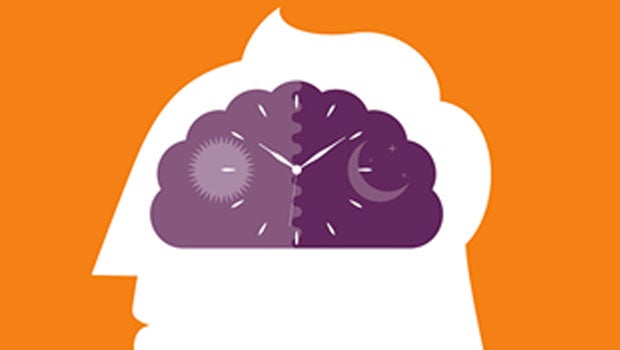
Understanding the molecular mechanisms of our internal clocks may enable the development of therapies for sleep disorders and other effects of clock disruption
Surveys show that Singaporeans are among the world’s most sleep deprived people1 2, insomnia being a common sleep disorder that about 15.3% of Singaporeans face3. A new study led by scientists from Duke-NUS Medical School (Duke- NUS) and the University of California Santa Cruz explains how mutations in certain proteins can shorten our biological clock timing, making some people extreme “morning larks” because their internal clocks operate on a 20-hour cycle instead of being synchronised with the 24-hour cycle of day and night. This causes them to rise and sleep early in the morning and evening respectively. The study, recently published in eLife, shows that the same molecular switch mechanism affected by these mutations is at work in animals ranging from fruit flies to people.
Biological clocks are an organism’s innate timing device. It is composed of specific proteins called clock proteins, which interact in cells throughout the body. Biological clocks produce and regulate circadian rhythms - the physical, mental, and behavioural changes that follow a daily cycle. For example, sleeping at night and being awake during the day is an example of a light-related circadian rhythm. Many people with sleep phase disorders have changes in their clock proteins. Generally, mutations that make the clock run shorter have a morning lark effect, and those that make the clock run longer have a pronounced night owl effect.
“In this new study, our team focused on mutations in a protein called casein kinase 1 (CK1), which regulates a core clock protein called PERIOD (PER). Clock-altering mutations in CK1 had been known for years, but it was unclear how they changed the timing of the clock,” said Dr Rajesh Narasimamurthy, Principal Research Scientist at the Duke-NUS’ Cancer and Stem Cell Biology (CSCB) programme.
Together with scientists from University of California Santa Cruz, and the University of California San Diego, the team performed structural and biochemical analysis of the CK1 and PER proteins that suggested how the switch works.
The findings show that CK1 can modify either of two sites on the PER protein. Modifying one site stabilises PER, while the other modification triggers its degradation. When the molecular switch that controls the abundance of the PER proteins is working right, it generates a 24-hour oscillation in the biological clock. The team showed how mutations in either CK1 or PER itself can alter the balance, favouring degradation over stabilisation, thereby disrupting the biological clock.
“Our results provide a mechanistic foundation to understand the essentially universal role of CK1 as a regulator of eukaryotic circadian clocks. It is important to understand how these clock proteins regulate our circadian rhythms, because those rhythms affect not only the sleep cycle but almost every aspect of our physiology. Understanding these molecular mechanisms may enable scientists to develop therapies for intervening in the clock to alleviate disruptions, whether they are caused by inherited conditions or by shift work or jet lag,” said Professor David Virshup, Director of the Duke-NUS CSCB programme and corresponding author of this study.
“Sleep disorders can give rise to serious consequences for health and reduce the quality of life among affected individuals in Singapore and beyond. This important study exemplifies how the cross-fertilisation of ideas and collaboration among researchers can yield important insights that may lead to future strategies to treat sleep disorders,” said Professor Patrick Casey, Senior Vice Dean for Research at Duke-NUS.
The team is currently investigating how to modify CK1 activity to change clock speed. These studies will guide the search for therapies that can treat jet lag and sleep disorders.
1 Singaporeans among the world's worst sleepers (Philips)
2 Sleep Deprivation (Tan Tock Seng Hospital)
3 Insomnia (SingHealth)
Reference: Philpott JM, Narasimamurthy R, Ricci CG, Freeberg AM, Hunt SR, Yee LE, Pelofsky RS, Tripathi S, Virshup DM and Partch CL (2020). Casein kinase 1 dynamics underlie substrate selectivity and the PER2 circadian phosphoswitch. eLife. DOI: 10.7554/eLife.52343













 Get it on Google Play
Get it on Google Play